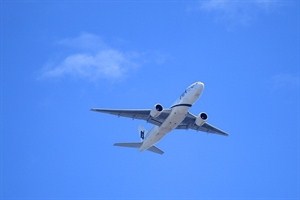 Traveling with your loved ones is one of the most special ways to spend time together. Certain aspects of traveling with older adults, including flying, can present unique challenges in your journey. In order to make travel a breeze, we suggest the following tips.
Traveling with your loved ones is one of the most special ways to spend time together. Certain aspects of traveling with older adults, including flying, can present unique challenges in your journey. In order to make travel a breeze, we suggest the following tips.
Request special airport services in advance
With advanced planning, a trip to the airport can be made much easier with special services provided by airports and airlines.
The New York Times explains that wheelchairs should be requested when booking airline tickets. In the event that you were unable to request a wheelchair while booking, call the airline at least 48 hours prior to your flight to arrange for wheelchair services. When you arrive at the airport, let the ticket agent know about your request. From there, you or your flying partner will be escorted to your gate in a wheelchair.
Often times you or your travel companion may be healthy enough to walk, but unable to walk fast or for sustained periods of time. This can make for a stressful airport experience, especially if you are rushing to get to your gate. If this is the case, many larger airports offer electric carts to move fliers around the airport quickly. You won’t need to reserve an electric cart – simply ask your ticket agent where to get one.
Arrive early
Even with a reserved wheelchair or intentions of hopping on an electric cart, you’ll still need to plan for extra time to get around at the airport. You can never guess if you’ll be waiting for your wheelchair or if it will be ready and waiting when you get there, but you can get to the airport early just in case.
American Airlines suggests arriving at the airport 90 minutes prior to departure when checking bags. When traveling with an elderly passenger, especially if it is during a peak travel period, arriving even earlier is highly advisable.
Stay healthy during your flight
Airplanes can be a breeding ground for bad health, with the risk of illness increasing with the length of the flight. Older adults are often especially susceptible to the unhealthy conditions on flights. Luckily, a bit of preparation can help keep your travel companion feeling great.
One common yet easily preventable issue that fliers may encounter is dehydration. Dehydration is caused by the lack of humidity in an aircraft. The plane’s dry air has a humidity level much lower than typical indoor humidity levels; according to Everyday Health, the average humidity level of an airplane cabin is between 10 and 20 percent. Without much humidity, the mucus in your airway isn’t as moist as it should be to help trap germs entering the body, leaving you with an increased risk of catching a cold. Because of this, it’s important to be well hydrated. Start increasing the amount of water you drink 24 hours before your flight, and choose water (instead of dehydrating beverages such as soda or alcohol) during your flight.
Another health risk fliers should be aware of are blood clots. Sitting for long periods of time can increase the risk of blood clots. To help keep your blood moving, it is advisable to get up and stretch during the flight. USA Today suggests wearing loose fitting clothing and compression socks. Compression socks can help stimulate blood circulation in the feet, making it a great option for those unable to easily get up and move around the cabin.
Have you flown with an elderly family member or loved one? What tips do you have to keep your airport and airplane experience as stress-free as possible? Let us know in the comments!
Brittney Lane
Marketing & Communications
Chicago Skilled Nursing
Chicago Senior Living

